
Roots
To truly comprehend how heritage hair care guarded coils, one must first listen to the whispers of the past, to the elemental language of the strand itself. Coiled hair, with its unique helical architecture, stands as a testament to the diverse expressions of human biology. Its very structure, characterized by tight curves and often a flattened elliptical shape, means fewer contact points between individual strands. This morphology, while breathtakingly beautiful, inherently presents challenges.
The natural oils, sebum, produced by the scalp, struggle to travel down the spiraling length of the hair shaft, leading to a tendency towards dryness. Moreover, these delicate curves are natural points of vulnerability, susceptible to breakage if handled without understanding or care. For millennia, before modern chemistry offered its array of solutions, ancestors across continents, particularly within communities of African descent, developed ingenious systems of care. These systems, born of intimate observation and necessity, formed a profound relationship with hair, recognizing its vulnerability and devising methods to shield it from environmental stressors and daily wear. These were not mere beauty routines; they were survival strategies for the hair, woven into the fabric of daily life and communal wellbeing.
The wisdom passed down through generations understood this intrinsic fragility. It was a knowing born from living with and tending to coils, observing how they responded to the sun’s gaze, the wind’s touch, and the absence of moisture. The solutions were often simple, yet deeply effective, drawing directly from the earth and the collective ingenuity of a community. These practices provided a shield, a nurturing balm, a careful manipulation that honored the coil’s inherent design.
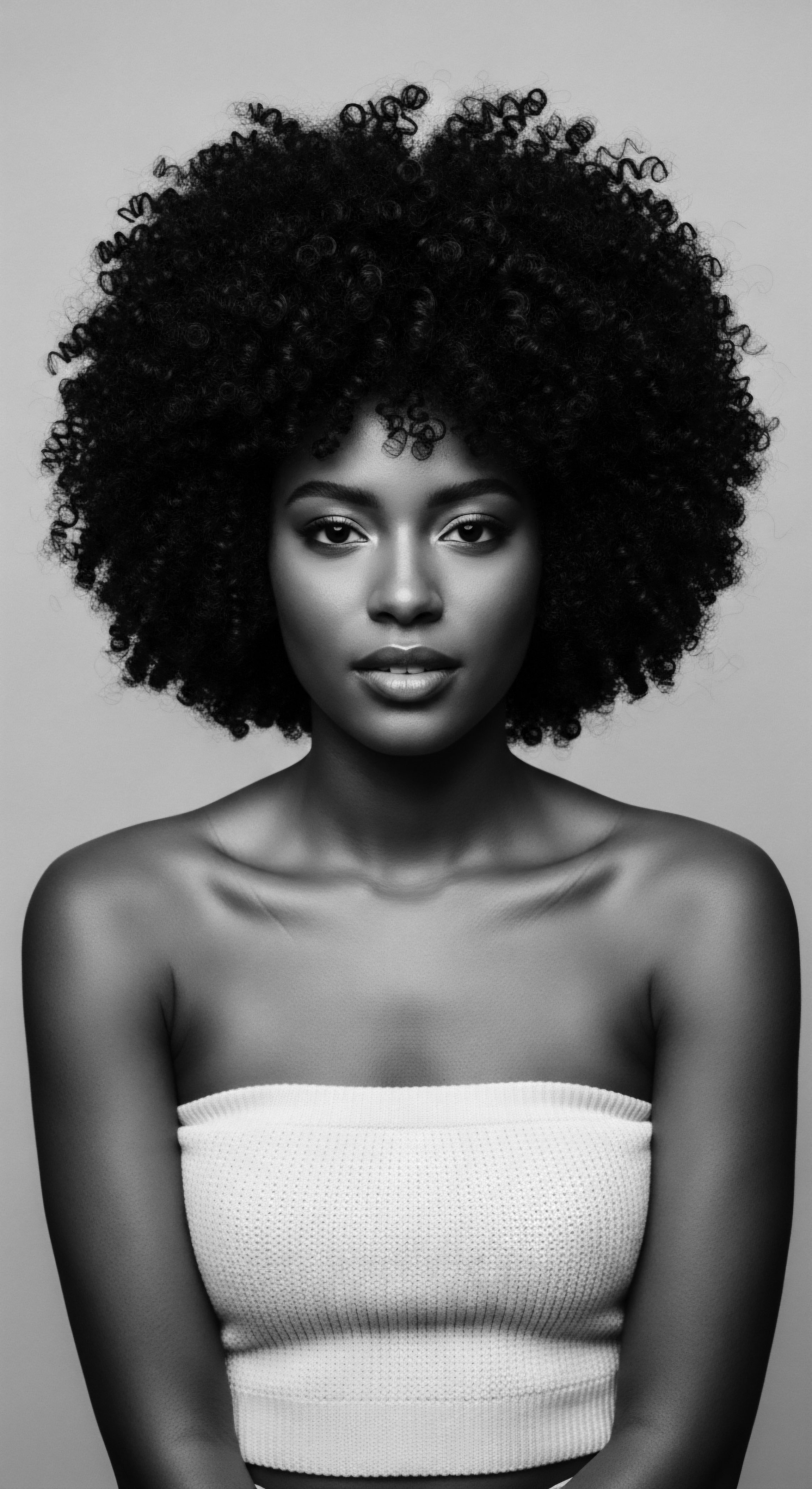
The Coil’s Ancestral Architecture
Consider the singular nature of a coiled strand. Unlike straight or wavy hair, which allows for a relatively smooth descent of sebum from scalp to tip, the spiral trajectory of coily hair presents a labyrinth of turns. This natural pathway means that the ends, the oldest part of the hair, often experience the greatest dryness, leading to brittleness and breakage. Beyond hydration, the cuticle—the outermost layer of the hair shaft, composed of overlapping scales—plays a vital role in protection.
In highly coiled textures, these scales may be more raised or irregular, making the hair more susceptible to losing moisture and more prone to tangling. The genius of ancestral hair care lay in its profound understanding of these very characteristics, long before the advent of microscopes or molecular biology. They observed the ‘behavior’ of the hair ❉ its thirst, its tendency to knot, its fragility, and they formulated responses that spoke directly to these needs.
Ancestral hair practices offered a shield, a nurturing balm, and careful manipulation that honored the coil’s inherent design, long before modern science understood hair’s microscopic architecture.
This inherent dryness, this susceptibility to mechanical damage, led to practices that prioritized lubrication, minimal manipulation, and protective styling. Hair became a living archive, its health a reflection of diligent care and shared knowledge.
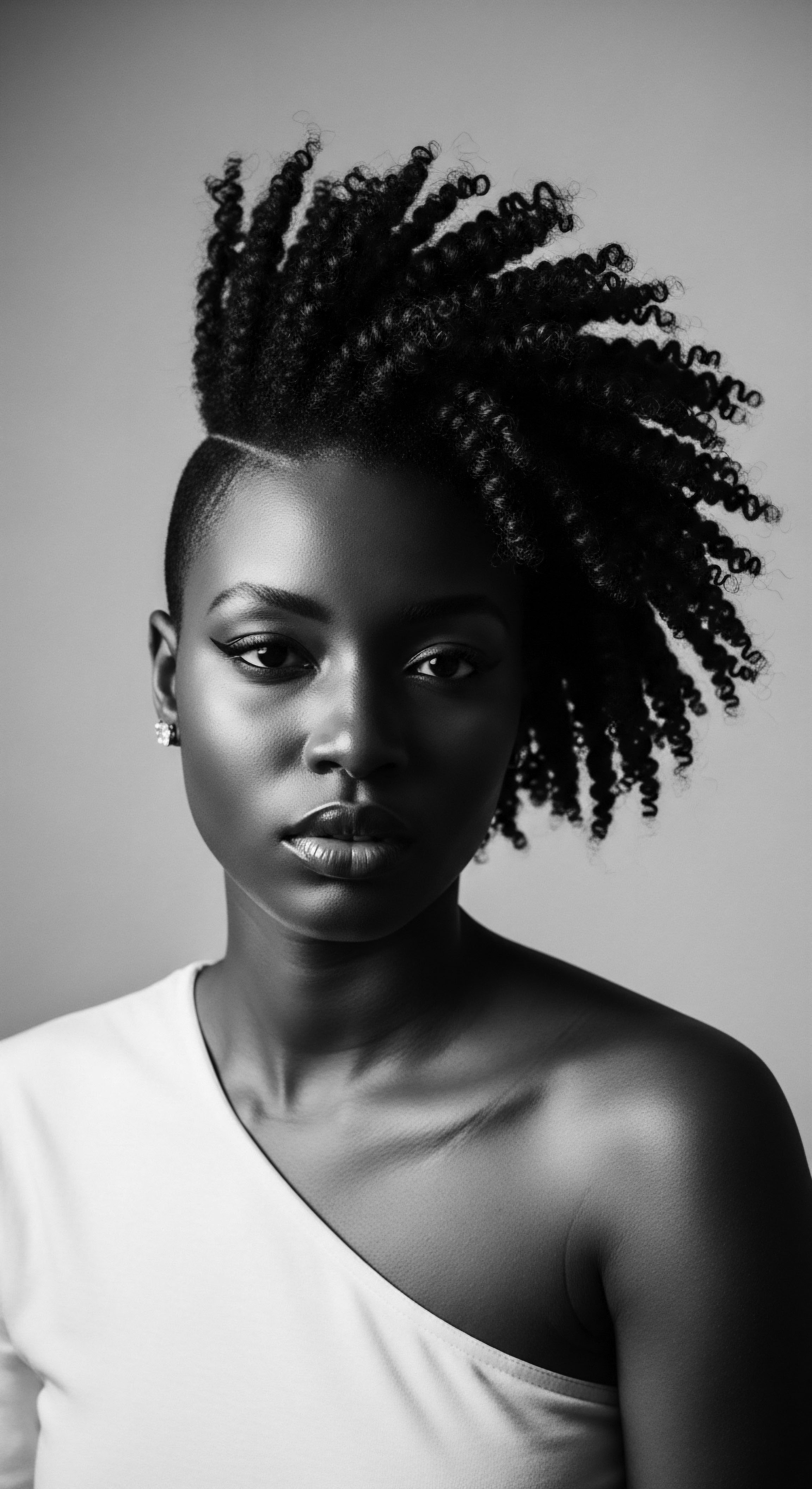
The Language of Hair Classification
While modern classification systems categorize hair types with numerical and alphabetical distinctions (e.g. 4C, 3A), ancestral cultures often used descriptive terms that spoke to the hair’s appearance, texture, and behavior. These were not merely scientific labels; they were cultural markers, tied to identity, status, and community. The understanding of different coil patterns informed specific care methods.
A tighter coil might receive more generous applications of rich butters, while a looser curl might benefit from lighter emollients. This nuanced approach, born from generations of observation, demonstrates an intrinsic system of classification that, while not formalized in a scientific text, was lived and practiced daily.
- Susu Hair ❉ A term possibly referencing tight, spiraled patterns, often indicating a need for deep moisture and gentle handling.
- Kente Braids ❉ Not a hair type, but symbolic patterns that required careful sectioning and tension, inherently protecting the hair beneath.
- Ogede Styles ❉ Large, sculptural forms that often involved wrapping or weaving hair, safeguarding the delicate ends.
These historical terms, though not universal, hint at a vocabulary that connected hair’s visual characteristics to its care requirements. They represent a lexicon born of necessity, observation, and cultural reverence.
| Observed Hair Characteristic Tendency to dry out |
| Ancestral Interpretation/Solution Regular application of plant-based oils and butters (e.g. shea, palm, coconut). |
| Observed Hair Characteristic Proneness to tangling |
| Ancestral Interpretation/Solution Detangling with fingers or wide-toothed combs, often with a slip-inducing agent. |
| Observed Hair Characteristic Shrinkage after wetting |
| Ancestral Interpretation/Solution Styling in elongated or stretched forms (braids, twists) to preserve length and reduce knotting. |
| Observed Hair Characteristic Fragility at bends |
| Ancestral Interpretation/Solution Minimal manipulation and protective styles that reduce exposure to friction and pulling. |
| Observed Hair Characteristic These observations guided practices that addressed the fundamental challenges of coiled hair. |

Ritual
The protection of coils through heritage hair care was not a singular action; it was a deeply ingrained system of rituals, a vibrant tapestry of techniques, tools, and communal practices passed from hand to hand, generation to generation. These rituals were both art and science, each movement serving a dual purpose ❉ to sculpt beauty and to safeguard the delicate nature of textured hair. From the intricate braiding patterns that told stories on the scalp to the carefully chosen tools that navigated the curl’s path, every aspect of styling contributed to the hair’s wellbeing, forming a direct barrier against environmental damage and mechanical stress. The very act of styling became an act of preservation, a conscious effort to minimize friction, retain moisture, and prevent the dreaded breakage that could diminish length and vitality.

Protective Coiffures Across Time
One cannot speak of heritage hair care without acknowledging the profound role of protective styling. These styles were not merely aesthetic choices; they were strategic defenses for the hair. Braids, twists, and locs, in their myriad forms, served as physical envelopes, encasing the vulnerable strands and shielding them from the elements.
By tucking away the delicate ends, which are the oldest and most fragile part of the hair, these styles drastically reduced exposure to friction from clothing, environmental pollutants, and the drying effects of wind and sun. The tension, when applied correctly, was distributed across the scalp, reducing strain on individual follicles while allowing the hair to rest and retain its moisture.
Consider the historical accounts of hair practices in various African societies. The Dogon women of Mali, for example, traditionally maintained elaborate coiffures, often involving intricate braids and coils. These styles, while deeply symbolic and indicative of social status, were meticulously cared for, often with applications of shea butter and other emollients, which provided both lubrication and a seal against moisture loss. The collective memory of these practices, passed down through oral traditions and observation, emphasized low manipulation and styles that could be maintained for extended periods, reducing the need for daily styling and the associated mechanical stress.
Protective styles, like braids and twists, were not just aesthetic choices but strategic defenses, physically encasing and shielding delicate coiled strands from environmental and mechanical stress.

Traditional Tools and Their Gentle Touch
The tools employed in heritage hair care were extensions of the hands, designed with the unique characteristics of coils in mind. Unlike modern fine-toothed combs that can snag and tear, traditional implements favored wider teeth or were even crafted from natural materials like bone or wood, smoothed to glide through tangles with minimal resistance. Fingers, too, were essential tools, capable of feeling the nuances of the hair, gently separating knots, and distributing products evenly.
The art of detangling was a patient, deliberate process, often performed on damp or oiled hair, which further aided in slip and reduced breakage. This methodical approach, prioritizing gentleness over speed, directly contributed to the preservation of coil integrity.
Detangling Combs ❉ Often crafted from wood or animal horn, these combs featured widely spaced, polished teeth that minimized snagging and tearing during the detangling process.
Hair Picks ❉ Used not just for volume, but for gently lifting and aerating hair without disturbing the overall style, reducing the need for excessive manipulation.
Styling Pins and Adornments ❉ Beyond their decorative purpose, pins made from bone, wood, or metal secured styles in place, thereby reducing movement and friction that could lead to damage.
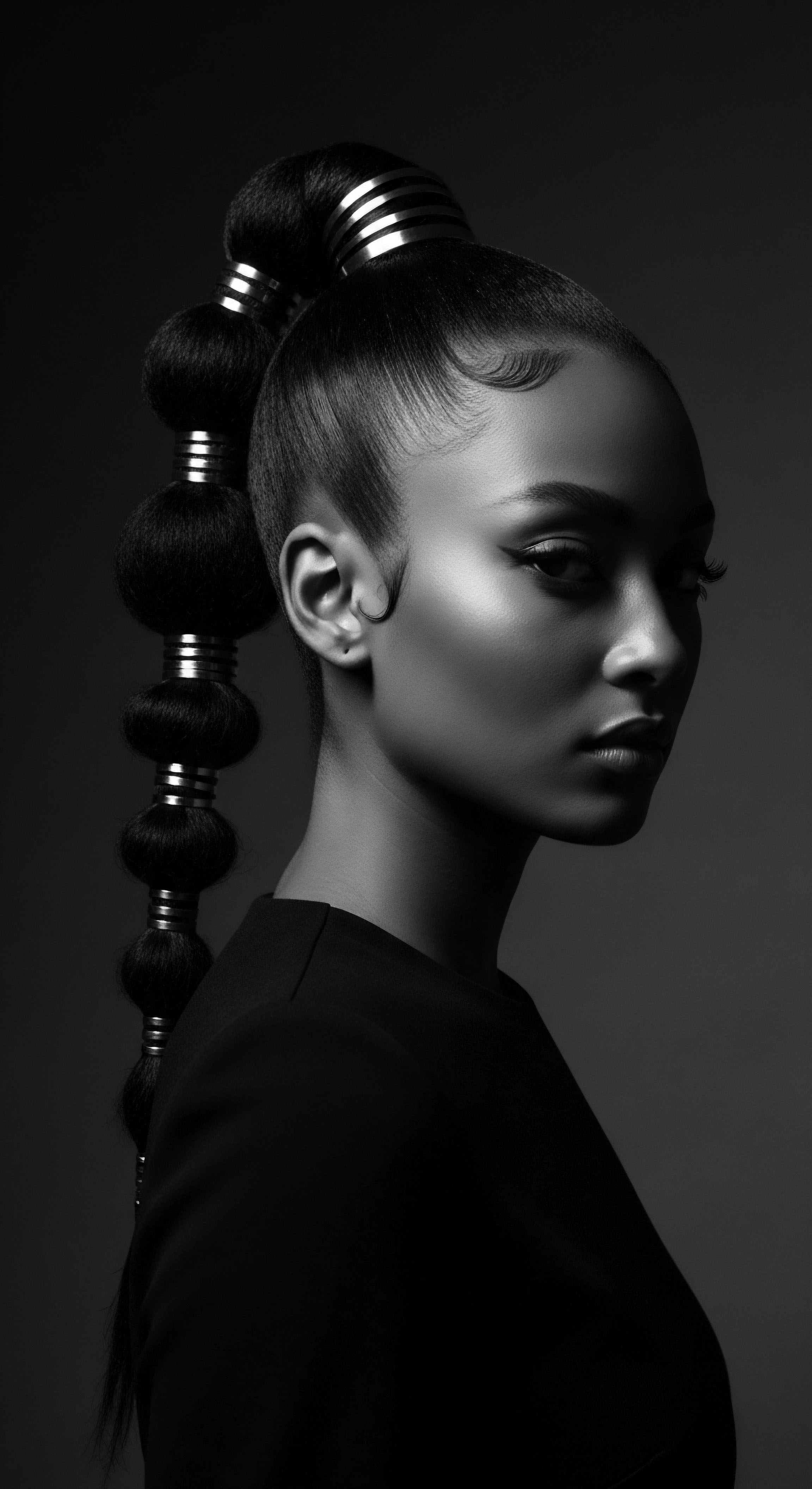
Relay
The enduring legacy of heritage hair care in protecting coils lies not only in the tangible practices but also in the philosophical stance that hair is a sacred extension of self, deeply interconnected with wellbeing and identity. This holistic approach, rooted in ancestral wisdom, understood that external applications must be supported by internal nourishment and careful, consistent ritual. The knowledge passed down through generations transcended mere topical remedies; it encompassed comprehensive daily and nightly routines designed to mitigate the specific vulnerabilities of coiled textures, drawing upon the earth’s bounty and the communal wellspring of experience. This section delves into the foundational elements of these regimens, from the ingredients harvested with intention to the nighttime cocoons that shielded strands during rest, all while considering how modern understanding often echoes these long-held truths.

Ingredients from the Earth’s Bounty
Ancestral communities utilized the botanical treasures of their environments to craft elixirs that profoundly nourished and protected coils. These ingredients were chosen for their emollient properties, their ability to seal moisture, and their capacity to soothe the scalp. They were not synthetic concoctions, but direct gifts from the land, often processed through traditional methods that preserved their potency. The widespread use of these natural substances formed the backbone of protective care, directly addressing the intrinsic dryness and fragility of coiled hair.
- Shea Butter (Vitellaria paradoxa) ❉ A fatty oil extracted from the nuts of the shea tree, indigenous to West Africa. Its rich emollient properties made it a staple for sealing in moisture, reducing transepidermal water loss from the hair shaft, and providing a protective barrier against harsh environmental conditions. Historically, its application was often communal, part of a shared care ritual, reinforcing its role beyond mere cosmetic use.
- Palm Oil (Elaeis guineensis) ❉ Valued for its conditioning properties and rich vitamin E content. In certain West African cultures, it was used not only for cooking but also for hair conditioning, providing a softening effect and contributing to sheen, thereby making coils more pliable and less prone to breakage during manipulation.
- Coconut Oil (Cocos nucifera) ❉ While more prominent in tropical regions, its penetrating molecular structure allowed it to deeply hydrate the hair shaft, reducing protein loss during washing and detangling. Its use was often paired with massages to stimulate the scalp, promoting circulation and overall hair health.
- Various Clays and Earths ❉ Beyond cleansing, certain clays, like bentonite or rhassoul, were used as clarifying and conditioning treatments. They gently absorbed impurities without stripping natural oils, leaving hair soft and prepared for moisturizing applications.
These ingredients were not simply applied; they were integrated into the lifecycle of hair care, used for cleansing, conditioning, sealing, and styling. The understanding of their properties, passed down verbally and through demonstration, was an unwritten manual for protecting coils.
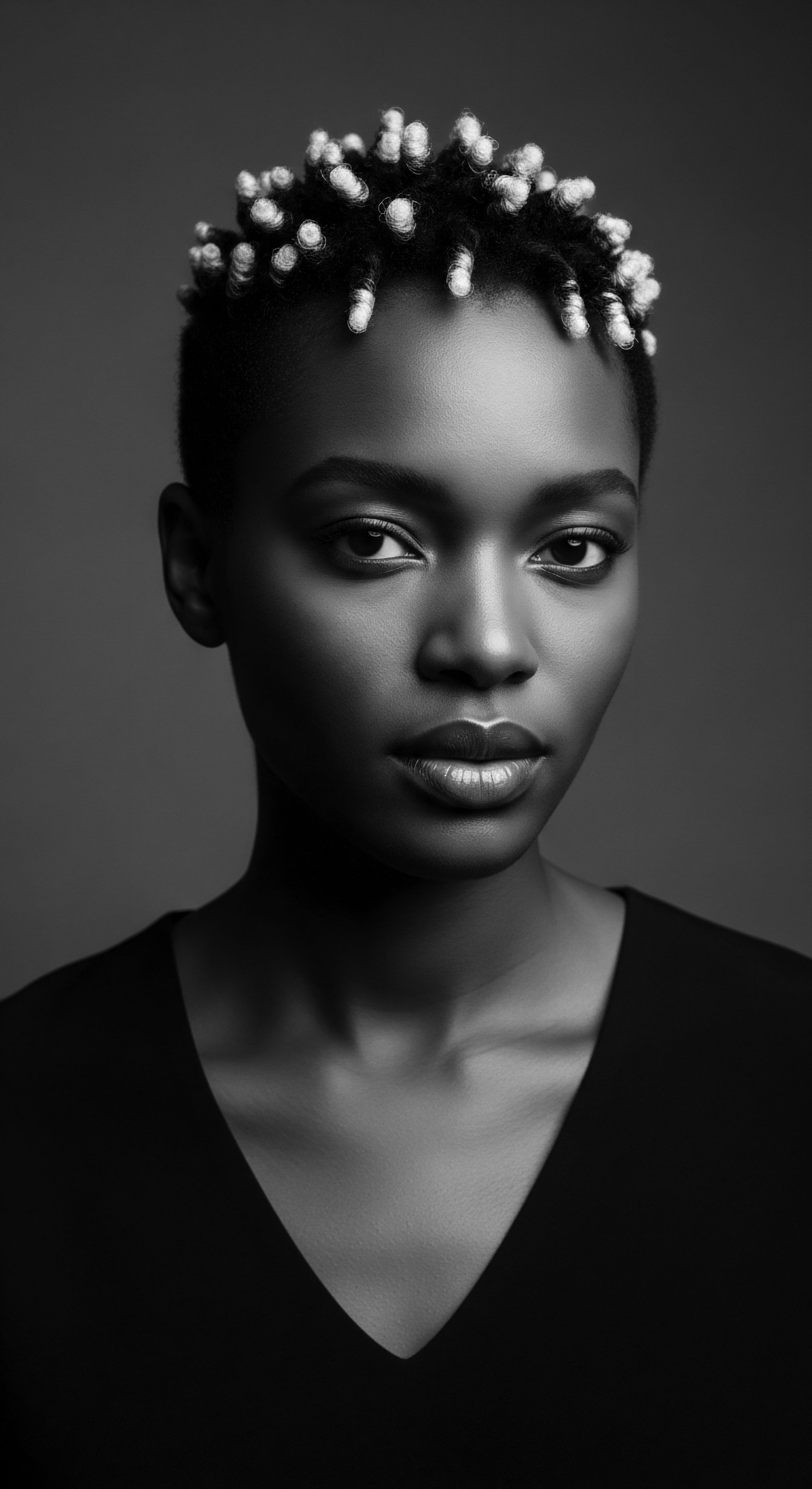
The Nighttime Sanctuary ❉ Bonnet and Wrap Wisdom
The wisdom of heritage care extended beyond daytime styling, recognizing that the delicate structure of coils required continuous protection, even during sleep. The practice of covering hair at night with soft fabrics – bonnets, wraps, or scarves – is an ancestral innovation, predating modern satin pillowcases. This simple yet profound ritual served multiple critical functions in preserving coil health. First, it created a protective cocoon, shielding the hair from the abrasive friction of cotton pillowcases, which can absorb moisture and create frizz, leading to tangles and breakage.
Second, it helped to retain the moisture and oils applied during the day, allowing them to truly penetrate and condition the hair without being wicked away by absorbent fabrics. This overnight sealing of moisture was a cornerstone of maintaining hydration in naturally dry coiled hair.
The historical use of head coverings, from elaborate wraps to more utilitarian caps, spans numerous African and diasporic cultures, serving both practical and symbolic purposes. While some coverings denoted status or religious observance, many also inherently provided protection for hair. For instance, in many West African traditions, head wraps were a daily accessory, and the natural fibers used, such as silk or finely woven cotton, offered a gentle environment for the hair underneath. This continuous protection, even in repose, minimized daily damage accumulation, allowing coils to retain their structural integrity and length.

Hair as a Symbol of Resistance and Wellbeing
The story of heritage hair care is inextricably linked to the broader Black and mixed-race experience, often serving as a silent, yet powerful, act of resistance and a reaffirmation of identity in the face of systemic oppression. During the transatlantic slave trade and subsequent periods of colonial rule and civil rights struggles, hair became a battleground, a canvas for both subjugation and self-determination. Despite immense hardship, enslaved Africans carried with them the knowledge of their hair, adapting ancestral practices to new environments with limited resources.
They used whatever was available—animal fats, kitchen oils, native plants—to condition and style hair, often in ways that preserved length and moisture. These practices were not just about survival; they were about maintaining a connection to a lost homeland, to a sense of self and dignity.
| Ancestral Practice/Ingredient Shea Butter application |
| Protective Mechanism for Coils Forms a lipid barrier, preventing moisture evaporation. |
| Modern Scientific Validation/Benefit Rich in fatty acids (oleic, stearic), provides occlusive seal, reduces transepidermal water loss (Goreja, 2004). |
| Ancestral Practice/Ingredient Protective braiding/twisting |
| Protective Mechanism for Coils Minimizes mechanical friction, tucks away delicate ends. |
| Modern Scientific Validation/Benefit Reduces tangling, breakage from manipulation, and exposure to environmental stressors. |
| Ancestral Practice/Ingredient Nighttime head coverings |
| Protective Mechanism for Coils Shields hair from abrasive surfaces (e.g. cotton). |
| Modern Scientific Validation/Benefit Reduces frizz, moisture loss, and mechanical damage from pillow friction. |
| Ancestral Practice/Ingredient Finger/wide-tooth detangling |
| Protective Mechanism for Coils Gentle separation of knots, minimizing tension. |
| Modern Scientific Validation/Benefit Prevents mechanical breakage by reducing snags and pulling on fragile coil bends. |
| Ancestral Practice/Ingredient The efficacy of heritage practices for coil protection finds strong echoes in contemporary understanding of hair science. |
An illustrative example resides in the 18th and 19th centuries within the Caribbean and American South. Despite laws like the Tignon Laws in Louisiana (1786), which mandated that free women of color cover their hair, these women often transformed the mandated headwraps into elaborate expressions of identity, style, and even covert communication (Arthur, 1993). Underneath these wraps, hair continued to be cared for using available natural resources, demonstrating a quiet, persistent defiance and a commitment to self-care that transcended oppressive dictates.
These practices, while outwardly compliant, were inwardly rebellious, protecting both the physical hair and the spirit of the wearer. This historical context highlights how heritage hair care for coils was not only about physical protection but also about the preservation of cultural identity and resilience.
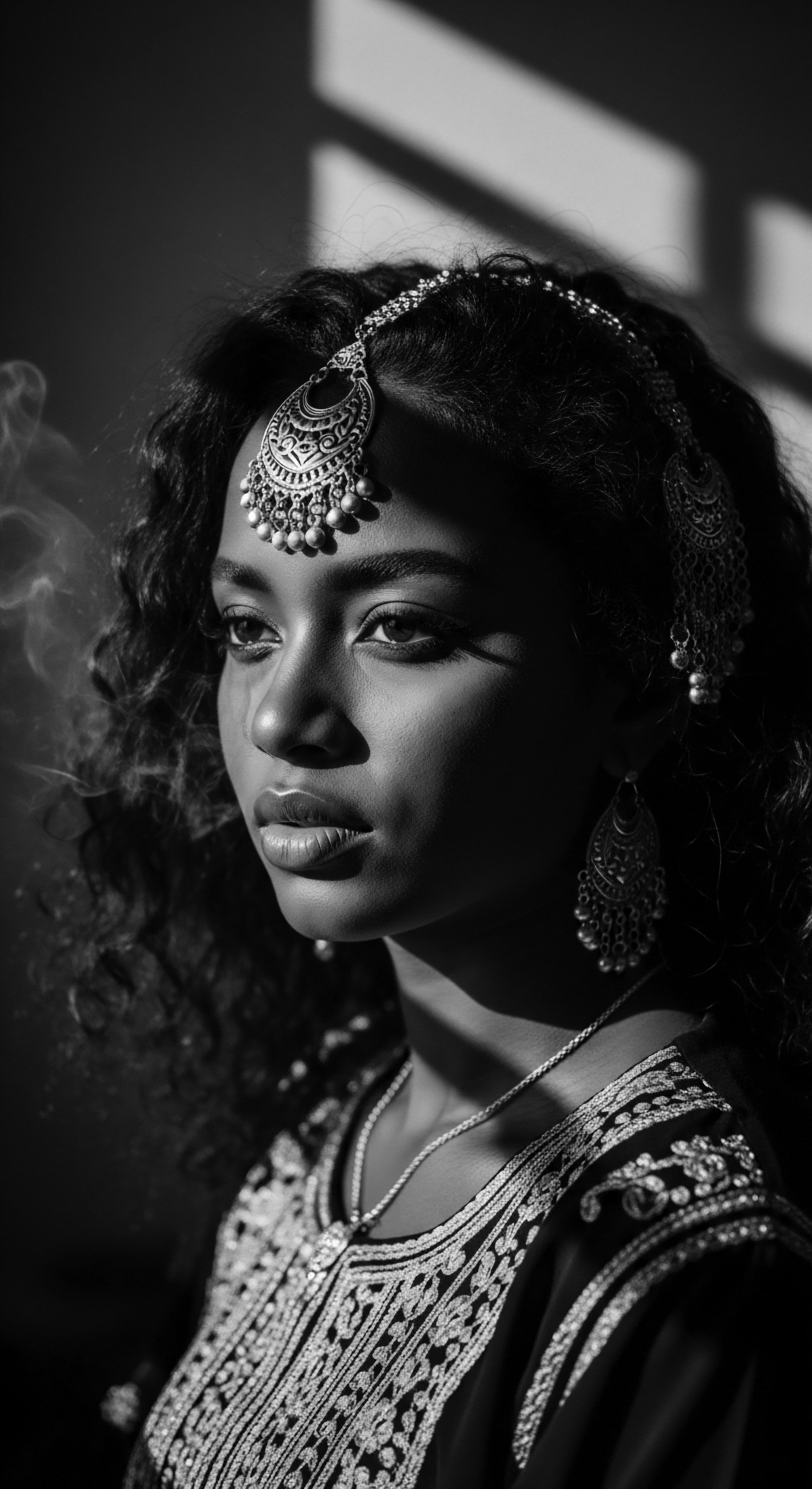
Reflection
The journey through heritage hair care, particularly as it relates to the enduring protection of coils, unveils a story far richer than a mere list of ingredients or techniques. It is a profound meditation on interconnectedness ❉ the human spirit with the natural world, community with individual expression, and the echoes of the past with the vitality of the present. The ‘Soul of a Strand’ ethos, indeed, suggests that each coil carries within it the memory of generations, a testament to wisdom gained through observation, adaptation, and an unwavering reverence for the hair’s inherent beauty and vulnerability. The ancestral hands that applied shea butter, braided intricate patterns, or carefully wrapped hair at night were not simply performing a chore; they were engaging in an act of profound care, an affirmation of identity, and a passing down of knowledge essential for thriving.
Today, as we stand at the nexus of ancient wisdom and modern scientific understanding, the lessons of heritage hair care for coils resound with renewed clarity. The principles remain timeless ❉ gentle handling, consistent moisture, and protective styling. Yet, the story goes deeper. It speaks to resilience, to the quiet strength found in maintaining one’s unique expression, even in the face of historical challenges.
It reminds us that caring for our coils is an act of honoring lineage, a celebration of a beautiful, complex heritage that continues to shape our understanding of hair health and identity. The journey of the coil, from its elemental beginnings to its role in voicing identity, continues, guided by the luminous wisdom of those who came before.

References
- Goreja, W. G. (2004). Shea Butter ❉ The Nourishing Power of Africa’s Gold. T.R. International.
- Arthur, L. B. (1993). African-American Hair Styles. MacMillan.
- Thompson, R. F. (1990). Flash of the Spirit ❉ African and Afro-American Art and Philosophy. Vintage Books.
- Byrd, A. D. & Tharps, L. L. (2014). Hair Story ❉ Untangling the Roots of Black Hair in America. St. Martin’s Griffin.
- Opoku, A. (2014). African Traditional Hair and Beauty Products. Trafford Publishing.
- Patton, M. F. (2000). African-American Hair as a Narrative of History and Culture. University Press of Florida.
